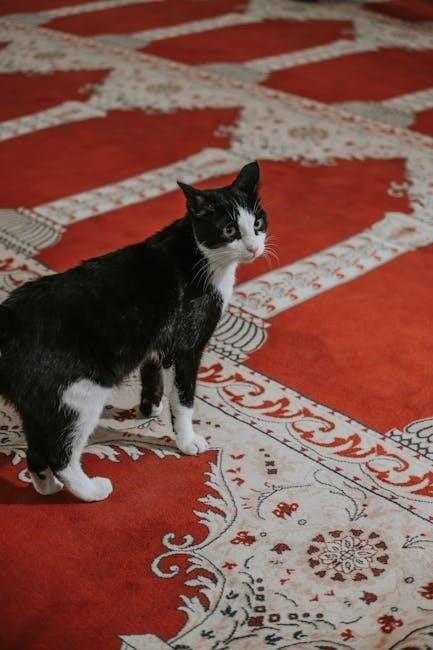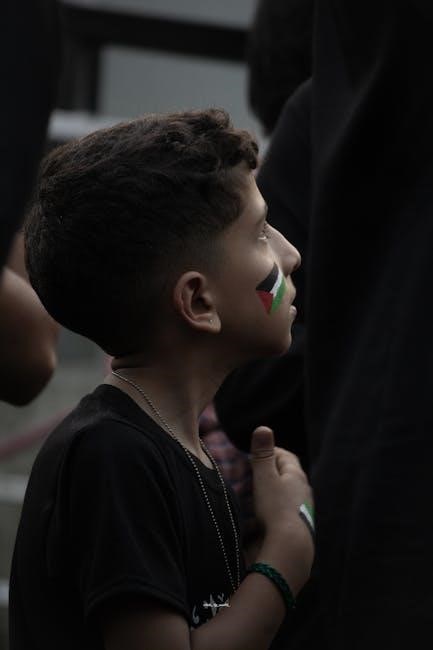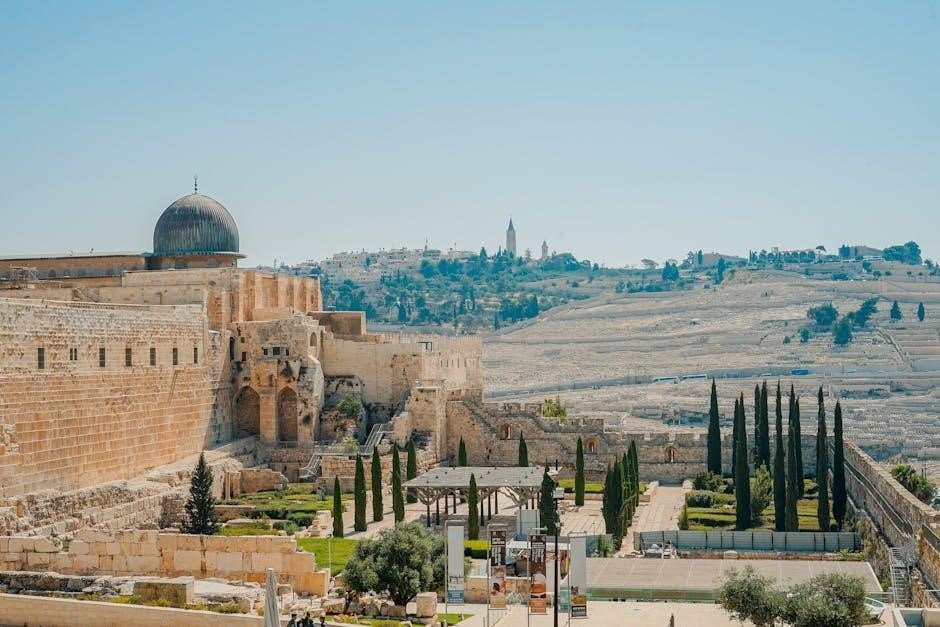Joe Sacco, a Maltese-American cartoonist and journalist, is renowned for his groundbreaking work in comics journalism. His graphic novel Palestine (1996) documents life in the West Bank and Gaza Strip, offering a raw, humanizing portrayal of Palestinian struggles under occupation. Originally serialized from 1993 to 1996, it was later compiled into a single volume with a preface by Edward W. Said, amplifying its impact as a powerful narrative on conflict and justice.
1.1. Biography of Joe Sacco
Joe Sacco, a Maltese-American cartoonist and journalist, was born on December 2, 1960, in Kirkop, Malta. He immigrated to Australia with his family at a young age and later moved to the United States, where he developed an interest in comics and journalism. Sacco studied journalism at the University of Oregon and began his career in underground comics. His work shifted toward journalism after traveling to conflict zones, leading to his groundbreaking graphic novels. Known for his raw, unflinching depictions of war and human rights issues, Sacco gained acclaim with Palestine (1996) and Footnotes in Gaza (2009); His unique blend of storytelling and reportage has made him a pioneer in the field of graphic journalism.
1.2. Overview of “Palestine” Graphic Novel

Palestine is a seminal graphic novel by Joe Sacco, first serialized from 1993 to 1996 and later compiled into a single volume. The book chronicles Sacco’s experiences traveling through the West Bank and Gaza Strip in 1991-1992, capturing the daily struggles, resilience, and humanity of Palestinians under Israeli occupation. Through vivid illustrations and firsthand testimonies, Sacco conveys the complexities of the conflict, offering a deeply personal and empathetic perspective. The novel blends journalism with storytelling, creating a compelling narrative that humanizes the Palestinian experience. Its historical and emotional depth has made it a landmark work in graphic journalism, widely praised for its authenticity and impact.
1.3. Historical Context of Palestine
The Israeli-Palestinian conflict, a central theme in Palestine, traces its roots to the 1948 establishment of Israel, leading to the displacement of hundreds of thousands of Palestinians, known as the Nakba or “catastrophe.” The 1967 Six-Day War further intensified the conflict, as Israel occupied the West Bank and Gaza Strip, imposing military rule. Sacco’s work captures the daily realities of life under occupation, including checkpoints, settlements, and restricted movement. The First Intifada (1987–1993), a mass uprising against Israeli occupation, provides the backdrop for Sacco’s narrative, highlighting the resilience and struggles of Palestinians. This historical context underscores the enduring tensions and human cost of the conflict, which Sacco vividly portrays in Palestine.

Structure and Content of “Palestine”
Palestine is structured as a compelling narrative, blending personal anecdotes, historical context, and vivid visuals. Originally serialized from 1993 to 1996, it captures the human cost of conflict through raw storytelling.
2.1. Publication History and Editions
Palestine was initially serialized as a 9-issue comic from 1993 to 1996. It was later compiled into a single volume in 2001, published by Fantagraphics Books. The graphic novel gained widespread recognition, leading to multiple editions, including a 2002 edition with a preface by Edward W. Said. Digital versions, such as PDF, have also been made available, enhancing accessibility. A Russian translation was published in 2016, further expanding its reach. The novel’s popularity has endured, with over 1,400 PDF downloads recorded, reflecting its lasting impact and relevance in documenting the Palestinian experience. Its publication history underscores its significance as a seminal work in graphic journalism.
2.2. Key Themes and Narrative Style
Joe Sacco’s Palestine explores themes of occupation, resistance, and human resilience, delving into the daily struggles of Palestinians under Israeli rule. The narrative style blends journalism with personal storytelling, offering a raw, unflinching portrayal of life in the West Bank and Gaza Strip. Sacco’s approach humanizes the conflict, emphasizing the emotional and psychological toll of prolonged occupation. His on-the-ground reporting captures the voices of ordinary people, creating a vivid, immersive experience. The graphic novel’s episodic structure, reflecting its origins as a serialized work, builds a comprehensive yet deeply personal account of Palestinian life. Sacco’s impartial yet empathetic storytelling balances multiple perspectives, providing a nuanced exploration of a complex geopolitical issue. His work remains a powerful testament to the enduring impact of conflict on individuals and communities.
2.3. Visual Storytelling Techniques
Joe Sacco’s Palestine employs a distinct visual style to convey the harsh realities of life under occupation. His detailed, hand-drawn illustrations capture the essence of environments, from the claustrophobia of refugee camps to the devastation of war-torn landscapes. Sacco uses bold lines and stark contrasts to emphasize the intensity of scenes, while subtle facial expressions and body language convey the emotional depth of his subjects. Panels are often dense with information, blending text and image seamlessly to create a dynamic narrative flow. This visual approach not only documents events but also evokes empathy, drawing readers into the personal stories of Palestinians. Sacco’s meticulous craftsmanship ensures that each page is both a testament to the conflict and a tribute to the resilience of those living through it. His work bridges journalism and art, making the complexities of the Palestinian experience accessible and unforgettable.

Themes and Representations
Palestine explores themes of displacement, occupation, and resistance, humanizing the Palestinian experience through raw, unfiltered narratives. Sacco’s work underscores the duality of oppression and resilience, vividly capturing the emotional and physical toll of conflict while amplifying marginalized voices. His representation balances the brutality of war with the humanity of its victims, creating a powerful, empathetic portrayal of a complex struggle. The graphic novel is a testament to the enduring spirit of those living under occupation, offering a deeply personal and political account of their reality. Sacco’s approach ensures that the stories of Palestine remain visible and unforgettable.
3.1. Depiction of Palestinian Struggles
Joe Sacco’s Palestine vividly portrays the daily struggles of Palestinians under Israeli occupation, capturing their resilience and suffering through personal narratives. The graphic novel delves into the realities of life in the West Bank and Gaza Strip, documenting experiences of displacement, home demolitions, and military oppression. Sacco’s intimate storytelling highlights the human cost of conflict, amplifying voices often marginalized in mainstream media. His detailed illustrations and candid interviews reveal the psychological and physical toll of living in a war-torn region, while also showcasing moments of resistance and hope. The work does not shy away from depicting the harsh conditions of refugee camps or the fear of arbitrary arrest, offering a poignant and unfiltered glimpse into the lives of Palestinians. Sacco’s approach balances the political with the personal, creating a deeply empathetic and thought-provoking narrative.
3.2. Representation of Conflict and Trauma
Joe Sacco’s Palestine masterfully captures the intensity of conflict and its traumatic impact on individuals and communities. Through stark, unflinching visuals and raw narrative, Sacco conveys the horrors of military occupation, airstrikes, and home demolitions. He vividly depicts the psychological toll on Palestinians, from the constant fear of violence to the loss of loved ones and livelihoods. Sacco’s illustrations amplify the emotional weight of these experiences, humanizing the victims and making the conflict’s brutality undeniable. His work also highlights the resilience of those enduring relentless oppression, offering a poignant balance between suffering and resistance. By documenting personal stories, Sacco transforms abstract political narratives into visceral, unforgettable accounts of human trauma and survival.
3.3. Role of Journalism in Graphic Novels

Joe Sacco’s Palestine exemplifies the transformative role of journalism in graphic novels, blending rigorous reportage with visual storytelling. Sacco’s work challenges traditional journalism by immersing readers in the lived experiences of Palestinians, creating an intimate connection to the conflict. His graphic novel acts as a medium for marginalized voices, documenting personal stories and historical events with precision. By merging factual accuracy with emotional narratives, Sacco’s journalism in Palestine humanizes the complexities of war and occupation, offering a unique perspective that text-only journalism often cannot. This approach not only educates but also engages readers on a deeper level, showcasing the power of graphic journalism to convey trauma and resilience in a visually compelling way.

Reception and Impact
Joe Sacco’s Palestine received critical acclaim and awards, influencing graphic journalism and educational curricula with its impactful portrayal of Palestinian life and global human rights struggles.
4.1. Critical Acclaim and Awards
Joe Sacco’s Palestine has garnered widespread critical acclaim for its profound and unflinching portrayal of Palestinian life under occupation. The graphic novel earned Sacco the prestigious American Book Award in 1996, recognizing its innovative storytelling and journalistic integrity. It has also been praised for its ability to humanize complex geopolitical issues, making it a landmark work in graphic journalism. The book’s impact extends beyond literature, as it has been adopted in academic curricula worldwide, fostering discussions on human rights, conflict, and visual storytelling. Its success has solidified Sacco’s reputation as a pioneer in the genre, inspiring future generations of graphic journalists and writers. The acclaim underscores the book’s enduring relevance and influence.
4.2. Reader Response and Popularity
Palestine has resonated deeply with readers globally, sparking widespread discussion and empathy for the Palestinian experience. Its popularity endures, as evidenced by its consistent presence in digital platforms and libraries. The graphic novel’s accessibility through PDF downloads has expanded its reach, making it a staple in both academic and personal libraries. Readers appreciate its blend of intimate storytelling and visual journalism, which provides a unique lens into the complexities of the Israeli-Palestinian conflict. The book’s ability to engage diverse audiences has contributed to its lasting popularity, ensuring its relevance across generations and cultures. Its impact continues to grow, solidifying its place as a essential read for anyone interested in the region’s history and human stories.
4.3. Influence on Graphic Journalism
Palestine has profoundly influenced the field of graphic journalism, setting a new standard for storytelling in conflict zones. Joe Sacco’s innovative approach, blending detailed reporting with vivid visuals, has inspired a generation of journalists and cartoonists. His work has shown how comics can convey complex geopolitical issues with depth and empathy, making them accessible to a broader audience; The success of Palestine has encouraged others to explore similar approaches, merging art and journalism to document human rights issues. Its influence extends beyond the medium, challenging traditional journalism norms and proving the power of visual storytelling in addressing global crises. The PDF availability of Palestine has further amplified its reach and impact, ensuring its lessons resonate widely.

Availability and Access

Palestine by Joe Sacco is widely available in PDF format, with over 1,400 downloads from platforms like Z-Library. Print editions are published by Fantagraphics Books, ensuring global accessibility.
5.1. PDF Versions and Digital Access
The graphic novel Palestine by Joe Sacco is readily available in PDF format, with over 1,400 downloads recorded from platforms like Z-Library and Internet Archive. Digital versions provide easy access to Sacco’s seminal work, allowing readers to explore the human stories of Palestine’s occupation. The PDF format ensures that the visual and narrative elements remain intact, preserving the emotional impact of Sacco’s journalism. Many versions include prefaces by scholars like Edward W. Said, enhancing the reader’s understanding of the historical context. Digital accessibility has made Palestine a widely shared resource, enabling global readers to engage with its powerful commentary on conflict and justice.
5.2. Print Editions and Publishers
Palestine has been published in multiple print editions by prominent publishers such as Fantagraphics Books and Planeta DeAgostini Cómics. The original serialization from 1993 to 1996 was later compiled into a single volume in 2001, featuring a preface by Edward W. Said. International editions, including a Russian version published by Бумкнига in 2016, have expanded its reach globally. Print editions ensure the tactile experience of Sacco’s vivid illustrations and storytelling, making it a cherished addition to libraries and personal collections. The consistent demand for print copies reflects the enduring relevance of Palestine in understanding the Israeli-Palestinian conflict through graphic journalism.
5.3. Libraries and Academic Use
Palestine by Joe Sacco is widely available in libraries and academic institutions, both in print and digital formats. Many libraries offer the graphic novel through collections like internetarchivebooks and inlibrary, ensuring accessibility for researchers and students. Its inclusion in academic curricula highlights its value as a teaching tool for understanding conflict, journalism, and visual storytelling. Scholars often analyze Palestine for its unique blend of journalism and art, making it a cornerstone in discussions about graphic journalism and its impact on raising awareness of global issues. The book’s presence in libraries underscores its role in fostering education and dialogue about the Palestinian experience;

Academic and Cultural Significance
Palestine is recognized for its academic value, used in educational curricula to explore conflict, journalism, and visual storytelling. It has culturally impacted awareness of the Palestinian struggle, influencing graphic journalism and fostering dialogue, with a preface by Edward W. Said amplifying its scholarly significance.
6.1. Use in Educational Curricula
Palestine is widely integrated into university curricula, particularly in Middle Eastern studies, journalism, and cultural studies. Its nuanced portrayal of conflict and human experience makes it a valuable educational resource; The graphic novel is often used to teach visual storytelling, journalism ethics, and the representation of trauma. Educators highlight its ability to engage students emotionally and intellectually, fostering critical discussions on bias, history, and justice. By combining personal narratives with historical context, Palestine provides a unique lens for understanding the Israeli-Palestinian conflict. Its inclusion in syllabi reflects its academic significance and its role in encouraging empathy and informed dialogue about global issues.
6.2. Cultural Impact and Awareness
Palestine has had a profound cultural impact, raising global awareness about the Israeli-Palestinian conflict. By presenting personal stories and struggles, Joe Sacco humanizes the Palestinian experience, countering stereotypes and fostering empathy. The graphic novel has inspired numerous discussions, exhibitions, and adaptations, bridging gaps between visual art and political discourse. Its influence extends beyond academia, sparking conversations among diverse audiences. Through its vivid visuals and intimate narratives, Palestine challenges perceptions and encourages readers to engage with the complexities of the conflict. This cultural resonance underscores its role in promoting understanding and solidarity, making it a significant work in contemporary discussions on justice and human rights.

6.3. Scholarly Analysis and Reviews
Palestine has been widely analyzed in academic circles for its innovative storytelling and journalistic integrity. Scholars praise Joe Sacco’s ability to blend visual and textual narratives, creating a powerful medium for conveying complex geopolitical issues. The graphic novel is often cited as a landmark in graphic journalism, with its unflinching portrayal of Palestinian life under occupation. Academic reviews highlight its role in challenging dominant narratives and fostering empathy through personal stories. Universities worldwide include Palestine in syllabi, recognizing its value as a teaching tool for understanding conflict and visual storytelling. Its scholarly reception underscores its significance as both a literary and visual work, offering insights into the human cost of political strife.
